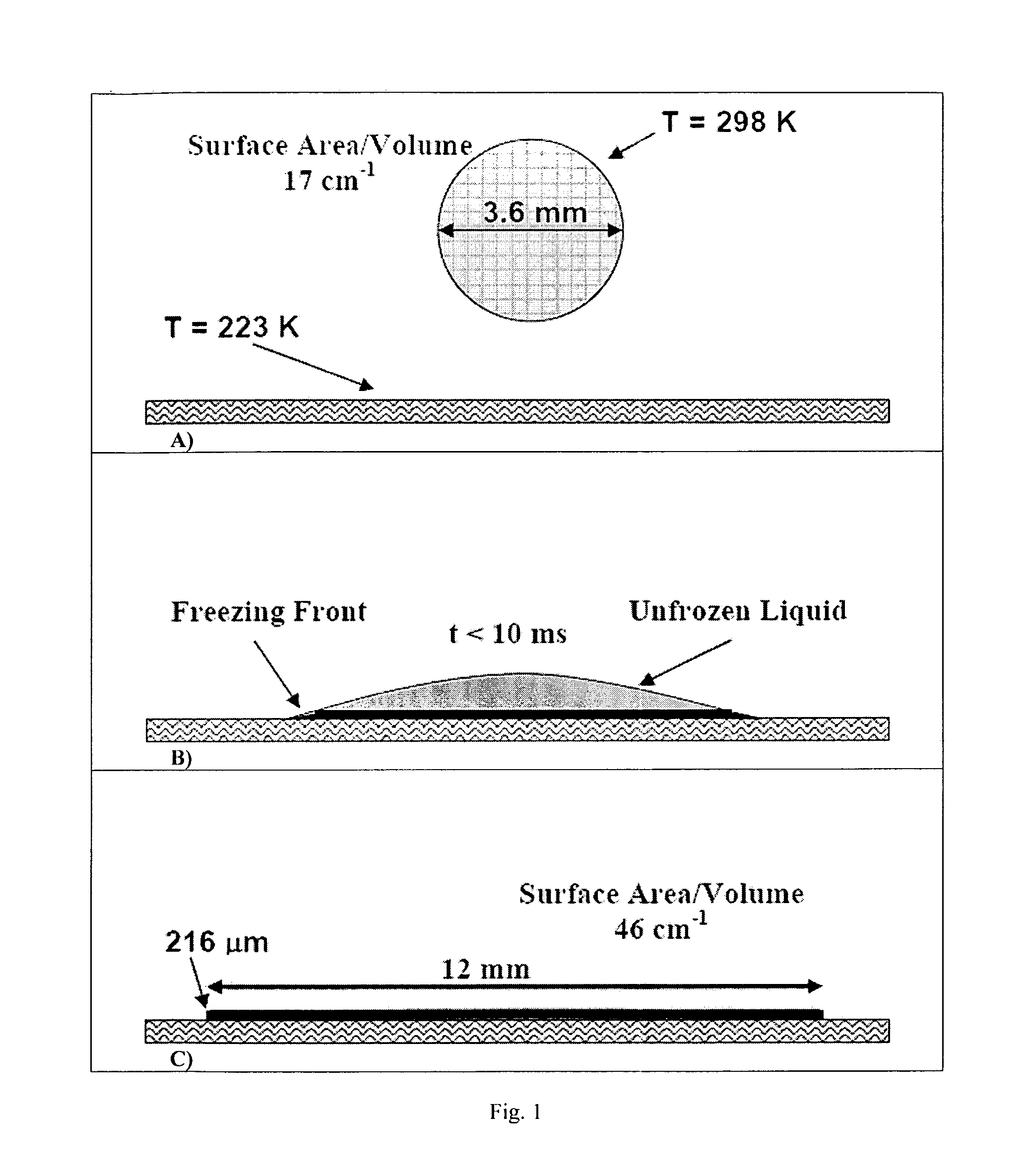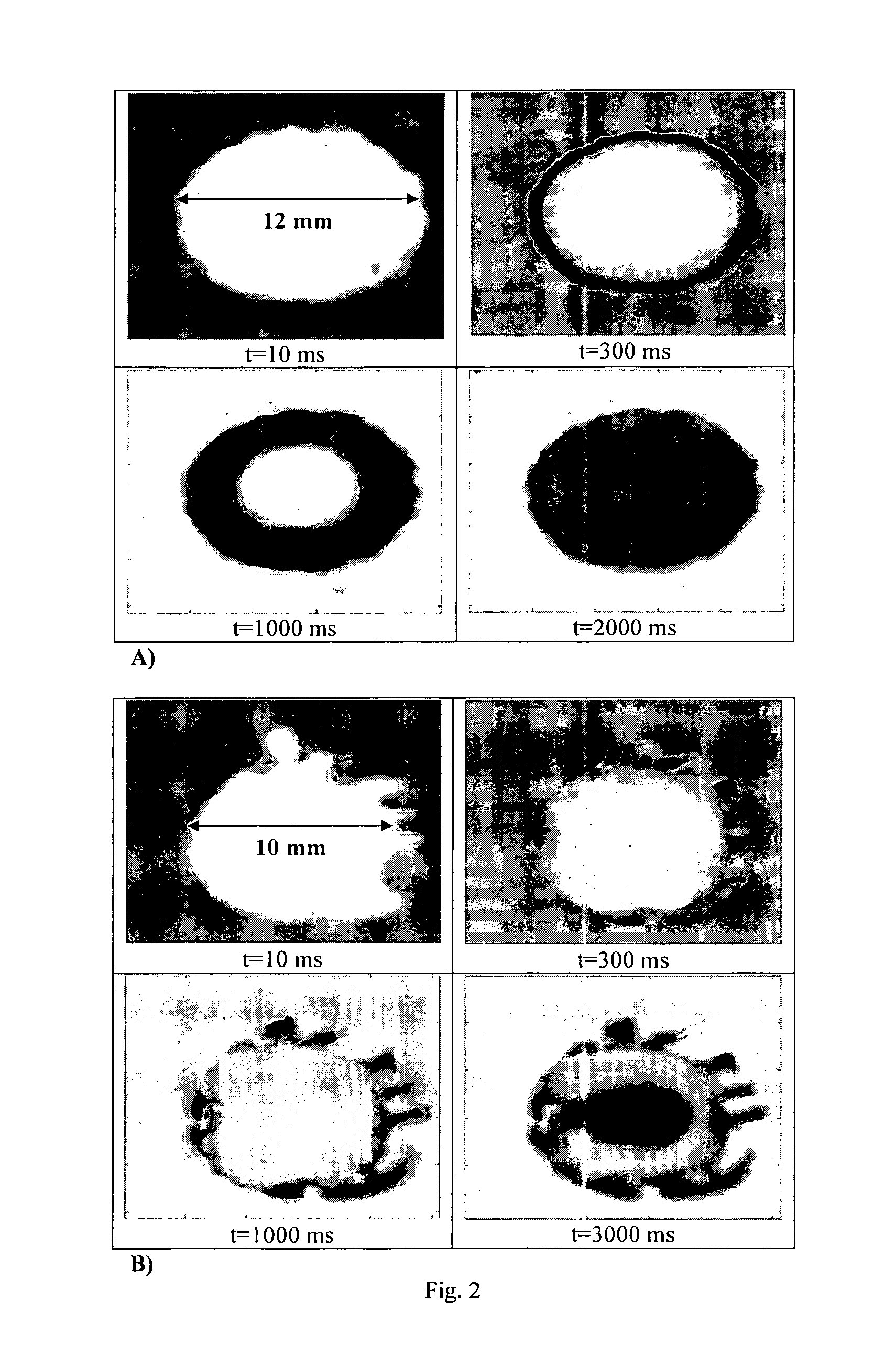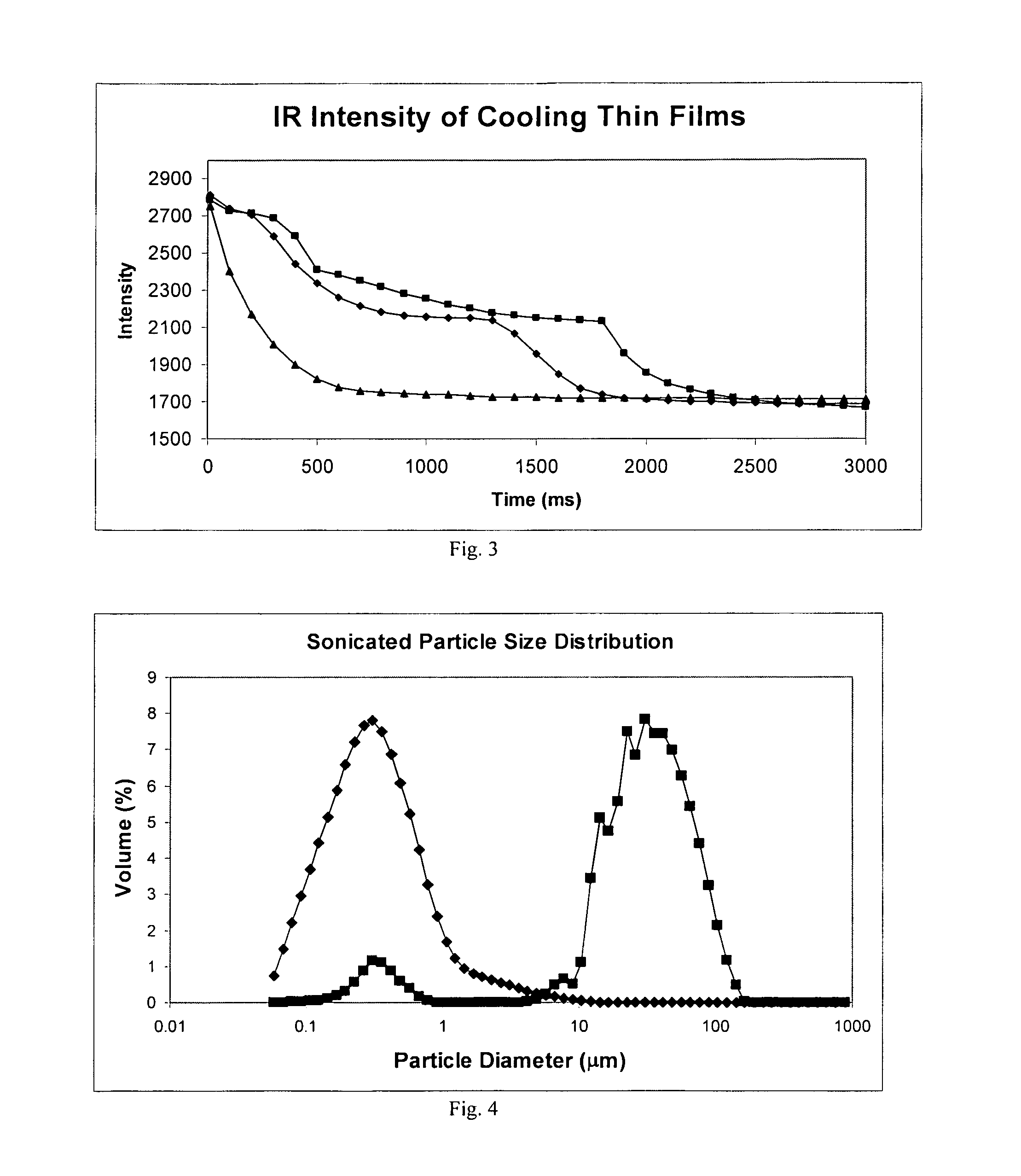Formation of stable submicron peptide or protein particles by thin film freezing
a technology of protein particles and submicron particles, which is applied in the direction of peptide/protein ingredients, granular delivery, powder delivery, etc., can solve the problems of difficult control of the particle size distribution in these processes, the inability of micronized protein powders to be biologically active, and the accumulation of proteins and peptides. , to achieve the effect of simple, efficient and robus
- Summary
- Abstract
- Description
- Claims
- Application Information
AI Technical Summary
Benefits of technology
Problems solved by technology
Method used
Image
Examples
example 1
[0103]The solutions frozen using the TFF process has a final concentration of 5 mg Lysozyme / mL solvent where the solvent was a water / ethanol mixture at different concentration. The feed solution was then passed through a 17 gauge needle at a flow rate of 4 mL / min falling from a height of 10 cm onto a rotating stainless steel drum maintained at a temperature of 223 K where the droplets were allowed to spread into disks and freeze. The frozen disks were then lyophilized using the standard lyophilization procedure described above. The resulting particle sizes (FIG. 11) were measured using the Malvern Mastersizer as described previously.
example 2
[0104]Solutions in varying initial concentrations of lysozyme in water were frozen as described above and then lyophilized to produce microparticles. The frozen particles were frozen on the rotating drum and then scrapped off into small vial for individual dosages. The particle sizes produced were measured using the Malvern Mastersizer as described above (FIG. 12).
[0105]FIGS. 13A to 13D compare the morphologies of TFF lysozyme prepared in glass vial versus TFF on a drum. Briefly, thin film freezing was performed directly in a vial that was cooled by submerging it partially in a liquid cryogenic fluid, or a fluid composed of dry ice and solvent. The feed was lysozyme at 5 mg / mL. The water in the frozen material was then removed by lyophilization of the vial. The product remained in the vial. A sample was removed from the vial and analyzed by scanning electron microscopy. The morphology was similar to a sample prepared directly on a metal drum. The advantage of this technique is that ...
PUM
| Property | Measurement | Unit |
|---|---|---|
| thickness | aaaaa | aaaaa |
| temperature | aaaaa | aaaaa |
| diameter | aaaaa | aaaaa |
Abstract
Description
Claims
Application Information
 Login to View More
Login to View More - R&D
- Intellectual Property
- Life Sciences
- Materials
- Tech Scout
- Unparalleled Data Quality
- Higher Quality Content
- 60% Fewer Hallucinations
Browse by: Latest US Patents, China's latest patents, Technical Efficacy Thesaurus, Application Domain, Technology Topic, Popular Technical Reports.
© 2025 PatSnap. All rights reserved.Legal|Privacy policy|Modern Slavery Act Transparency Statement|Sitemap|About US| Contact US: help@patsnap.com



